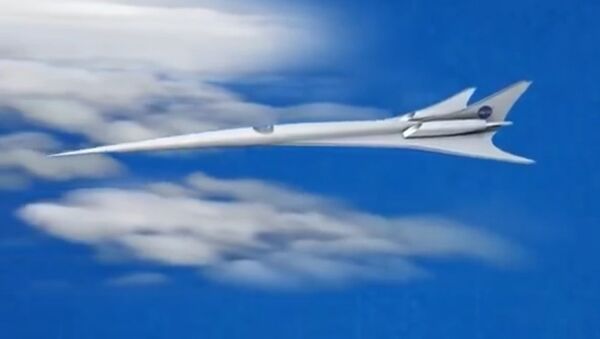WASHINGTON (Sputnik) — Tests are being conducted at a National Aeronautics and Space Administration (NASA) research facility in the US state of Ohio, the release explained.
"During the next eight weeks, engineers will expose the model to wind speeds ranging from approximately 150 to 950 mph to understand the aerodynamics of the X-plane design as well as aspects of the propulsion system," the release stated.
In addition to exceeding the speed of sound, the design seeks to eliminate the so called sonic boom, a disturbance on the ground that occurs when an object accelerates past the speed of sound — just over 750 miles per hour, the release revealed.
"Our design reduces the airplane’s noise signature to more of a ‘heartbeat’ instead of the traditional sonic boom that’s associated with current supersonic aircraft in flight today," Lockheed Martin QueSST Program Manager Peter Losifidis said.
NASA awarded Lockheed Martin a contract in February 2016 for the preliminary design of a supersonic X-plane flight demonstrator, according to the release.


